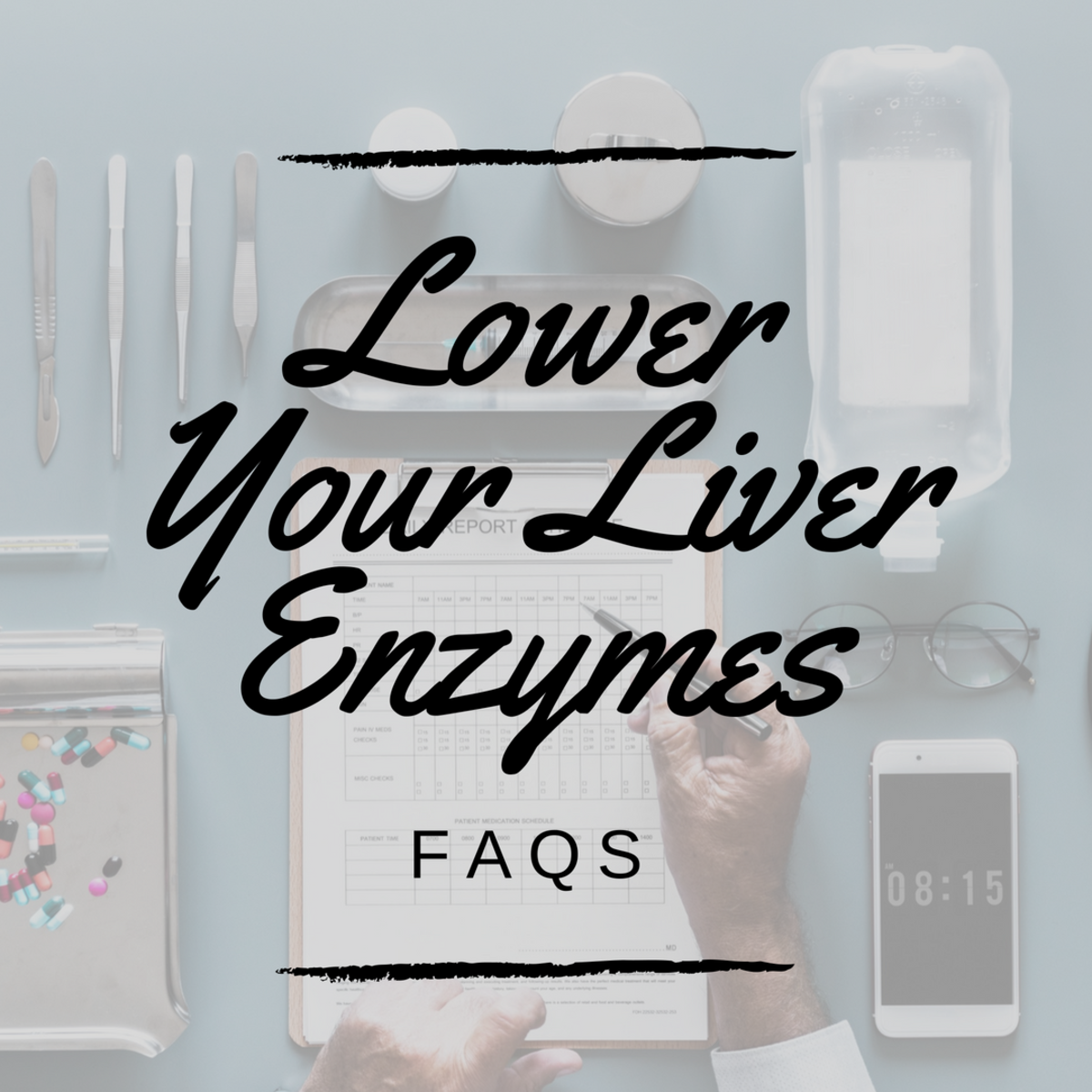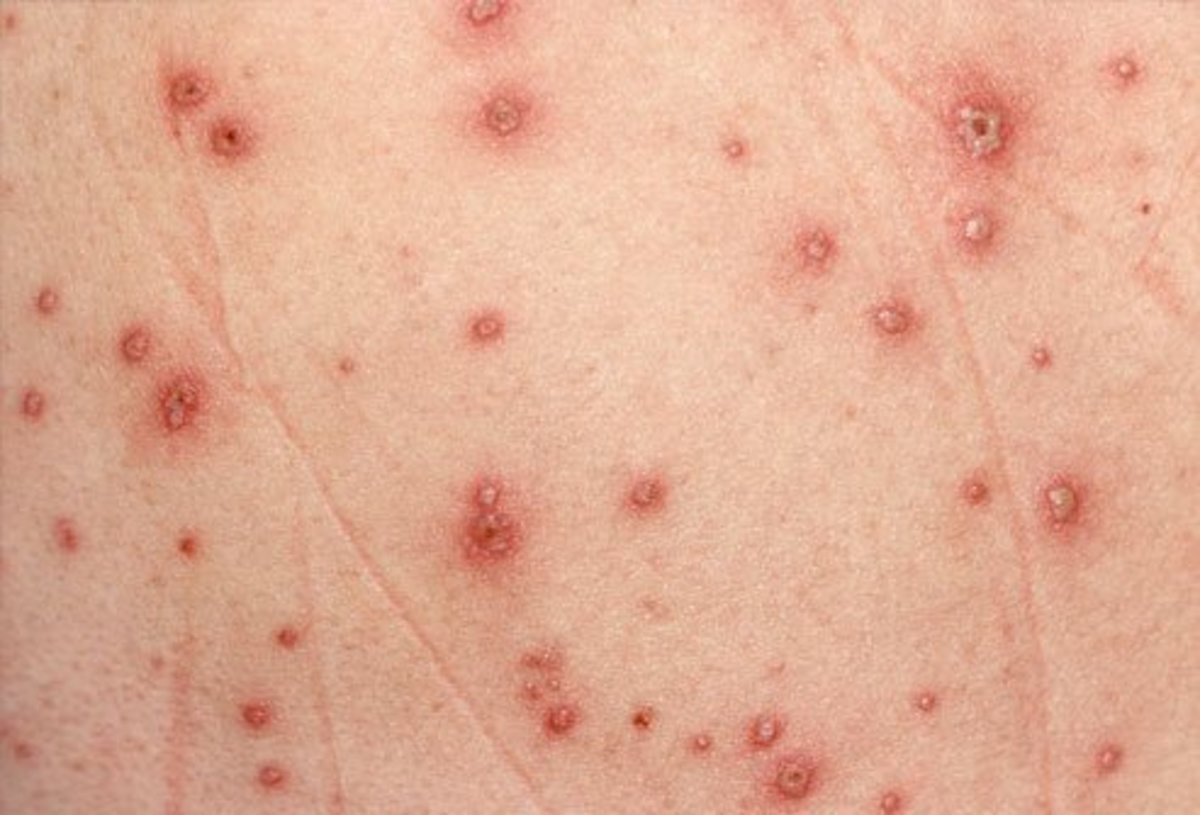Neck Pain #2 – Cervical Spondylosis (Cervical Disc Degenerative Disease)
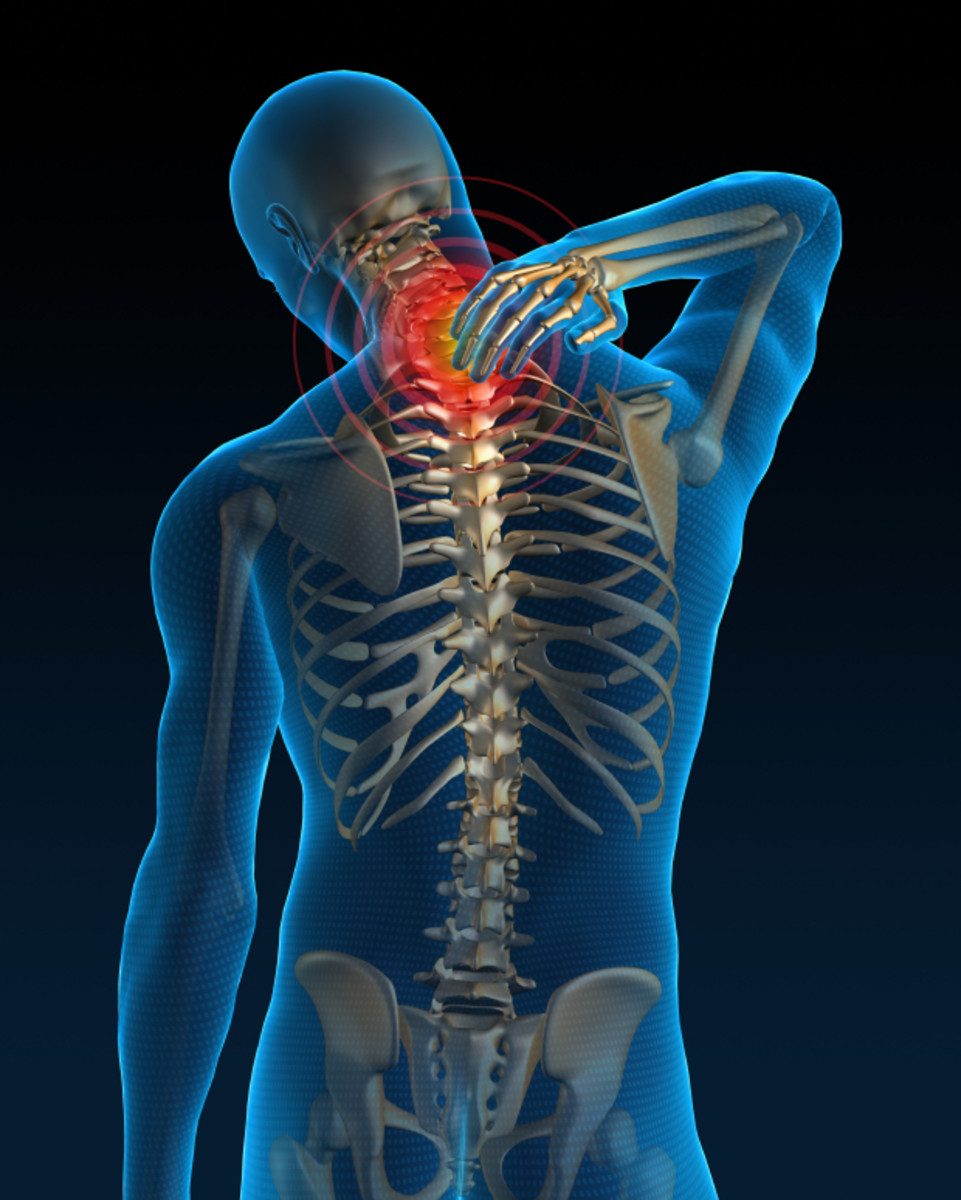
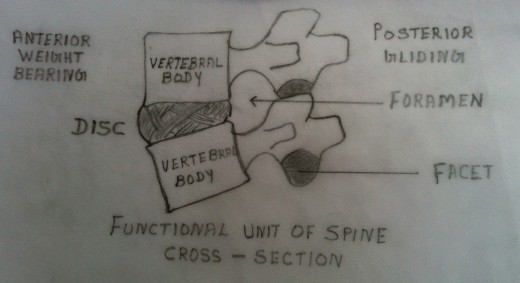
Introduction
In the case of cervical spondylosis the pain originating in the neck radiates down and is felt in the neck, shoulder, arm, hand or fingers. This radiating pain is felt unilaterally or bilaterally. The pain may also be felt on inter scapular area. This pain is usually felt due to the irritation of the cervical nerve roots within the intervertebral foramina. The initiation of pain is due to the encroachment on the nerve roots within foramina by the structures that form the borders of the foramina.
The structures that form the borders of the foramina are
- Anteriorly- The posterior aspect of the vertebral bodies, the posterior longitudinal ligament, and the posterior annular fibres of the disc.
- Posteriorly – The facet joints, their capsules and the ligamentumflavum.
- Superiorly and inferiorly – The pedicles of the posterior neural canal.
The size and the shape of the foramina is mainly dependent upon the integrity of inter vertebral discs, the facet joints and the pedicles. The internal pressure within the discs makes ‘taut’ the outer annular fibres and the longitudinal ligaments. The normal physiological movements of the neck (flexion,extension,rotation and lateral flexion) do not usually cause any encroachment upon the nerve roots or their dural sheaths. The pain and disability felt in the cervical region is mainly attributed to the degenerative changes that have occurred in the discs. The disc is involved in both acute and chronic pathology.
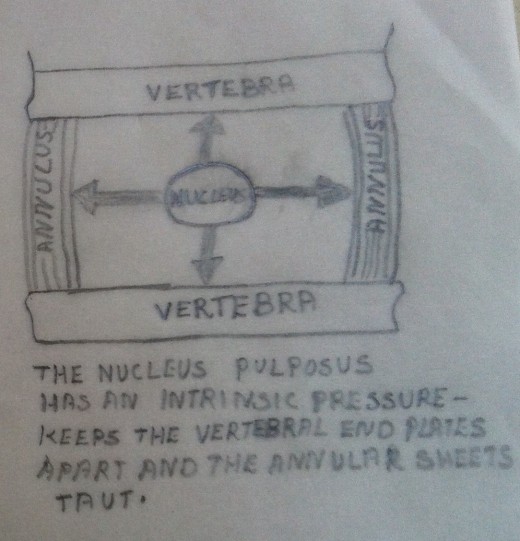
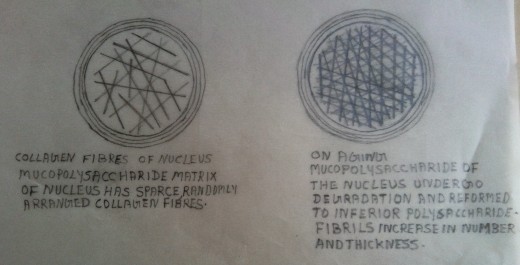
Degenerative Changes in Nucleus
The nucleuspulposus, which is softer and gelatinous, is centrally located within the annulus fibrosus. The nucleus is a mucopolysaccharide matrix. It contains a network of fibrils arranged at random interlocking at approximately 60 degrees angle. This structure provides the nucleus strength against deforming forces, elasticity and tensile strength. Due to aging and mechanical injuries physical and chemical changes occur within the nucleus. The mucopolysaccharides of the matrix undergo degradation and get converted into an inferior type of polysaccharide. This inferior type of polysaccharide absorbs excessive water. But it cannot retain this excessive water within itself. This leads to the swelling of the nucleus and hence the nuclear degeneration starts.
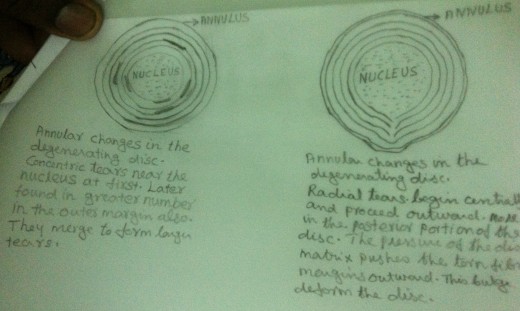
Degenerative Changes in Annulus Fibrosus
Due to aging the annulus fibrosus undergoes fibrillation and hence loose its integrity. As a result the annulus fibrosus loses its flexibility which enhances the possibility of disc failure. External persistent stress and strain enhances the rate and extend of annulus failure. In the early stages the tears are formed in the border between the nucleus and the vertebral end plates. These tears get worsened due to continuous stress and strain caused by daily activities. In the beginning the tears are concentric in nature. Gradually the intradiscal pressure causes the formation of radial tears in the annulus fibrosus. These radial tears may lead towards the centre of the nucleus.
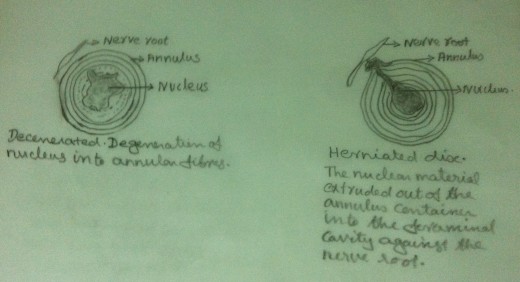
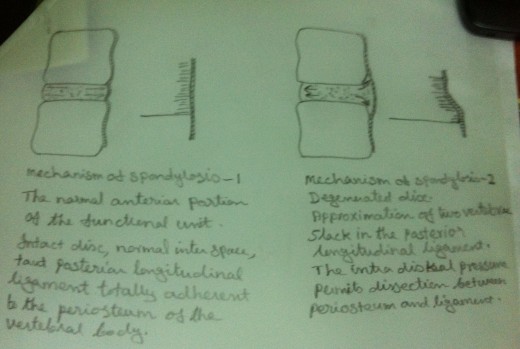
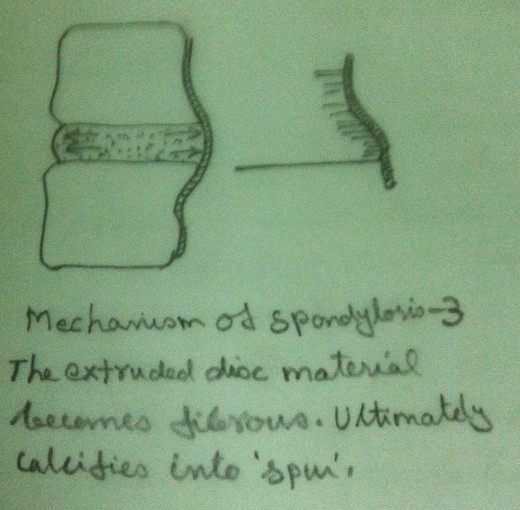
Pathological Changes in the Functional Unit – CervicalSpondylosis
- Due to the degenerative changes in the nucleus and in the annulus fibrosus, there will be fluid imbalance within the disc. Because of less hydrodynamic support, there will be abnormal movements in the functional unit. The adjacent vertebral bodies may come closer. Due to continuous stress and strain, ‘creep’ occurs between adjacent vertebrae.These changes lead to further degenerative changes.
- In anintact functional unit, the intrinsic pressure within the disc keeps the adjacent vertebral bodies apart. The anterior and posterior longitudinal ligaments are maintained ‘taut’ because of this intrinsic pressure. Because of the degenerative changes in the nucleus and in the annular fibres (within the disc) the intrinsic pressure within the disc is upset. As a result ‘tautness’ of the longitudinal ligaments is lost. Hence these longitudinal ligaments get slackened. It is to be noted that the intrinsic pressure within the disc, though upset, still persists. This upset intrinsic pressure within the disc exerts pressure on the loosened longitudinal ligaments. As a result these loosened longitudinal ligaments get avulsed from their periosteal attachment to the vertebral bodies. The nuclear matrix, now, extrude from between the vertebral bodies into the space between the longitudinal ligaments and the periosteum. This area of the periosteum can undergo inflammatory changes. This area may also be invaded by haemorrhage, fibrous tissue and by the extruded nuclear material. In the beginning the materials that have invaded the spaces between the longitudinal ligaments and the periosteum forms a ‘soft spur like’ tumour. This ‘soft spur like’tumour gets calcifiedand becomes an ‘osteoarthritis spur’. In the beginning these changes do not cause any instability to the functional unit. But gradually the stability of the functional unit will be affected. Hence there may be excessive abnormal movements in the functional unit.These ‘osteoarthritis spurs’encroach on the nerve roots within the foramen causing initiation of pain.
- Due to disc degeneration, the adjacent vertebral bodies approximate anteriorly. Consequently the facet joints also approximate posteriorly. The approximation of the facet joints may lead to joint degeneration. Subsequently capsule thickening and cartilage degeneration occur. There may be invasion of fibrous tissue into the cartilage. The unmyelinated nerve fibres present in the thickened cartilage and the fibrous tissue may cause pain.
- Due to the degeneration of the cartilage, the bones get denuded. Since the denuded bones are supplied by sensory nerve fibres the pain may be initiated.
- Due to the degenerative changes in the facet joints, joint capsules, cartilages and bones, there may be movement restrictions on the cervical spine. These movement restrictions may also elicit pain.

